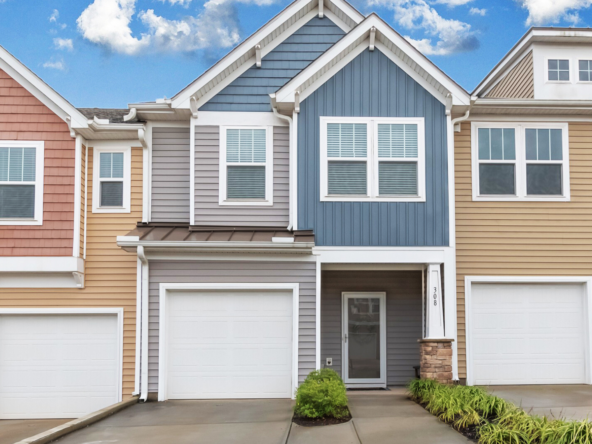Real estate investors who want to build their portfolio will often look into investing in multifamily real estate. Multifamily real estate investing is often recommended as a better option than owning several single family rental properties.
If you’re considering investing in real estate, here’s our guide to investing in multifamily properties.
Why Invest in Multifamily properties?
There are many benefits to owning multifamily dwelling units (MDU) instead of several single family homes: less risk, more income, even some tax breaks!
Let’s go over some of the biggest pluses of investing in multifamily properties,
More Cash Flow
It goes without saying: renting 20 units will often result in more money than renting a single one. Costs are lower by comparison, and even if one or two tenants leave, you’re still receiving passive income from the remaining ones. With various sizes of apartments you can appeal to various markets, which will increase your income and maximize your probability of renting every unit.
You could even consider living in one of the units yourself, while the rest generate rental money for you.
Stable value
The value of rental property is directly dependent on how much money it makes. If you have one rental home, and it goes untenanted for a long time, its value will be reduced, since it made less money in a year.
Multifamily properties are likely to get income every month out of the year, even with tenant rotation, and thus they keep their value better.
Less risk
There is strength in numbers. If your single family tenant leaves, your income for that property drops to zero, and you must hurry to advertise and fill it up, while still spending money in maintenance and landscaping.
Multi-family properties reduce this risk significantly, since in all likelihood you will not lose ALL tenants at once. This way, the remaining tenants support the maintenance and landscaping expenses, and your income is reduced but still strong while you find a new tenant for your vacant unit.
Scale
Purchasing a property is a lot of work: you must evaluate it carefully (and pay to have it professionally appraised), check the area and legislation, inform yourself about the owners and the building’s history, and negotiate the price and payment methods. If you want to own 20 units, would you rather do this 20 times, or just once for a 20-unit apartment building?
If you’re looking into building your rental portfolio aggressively and fast, multi family properties are the best way to do so.
Property Management
You can probably manage a single family property or two on top of your other occupations, and maybe a couple more if you make it your full-time job. However, for a large enough number of units it becomes necessary to hire a property manager or a management company, since the day to day management will be too much work for a single person.
On the up side, a large number of units will generate enough income for you to be able to easily afford property management (rental relations, maintenance, repairs, marketing, etc), which will free your time to do something that will bring you more income or more enjoyment.
Tax Benefits
Depending on the asset class of your property (we’ll discuss this later in this guide) you may qualify for LIHTC, or Low-Income Housing Tax Credit, a federal government program meant to incentivize low-income housing by offering a 10-year credit on federal income taxes to owners who make this type of investment.

Which Multifamily Asset Class is best for you?
Even though owners occupying one of their rental units is not unheard of, if you’re buying a multi-family property with the intention to rent all of the units, and you know you won’t be living in it, then you have a lot of freedom when it comes to choosing a property to buy (or develop).
Think of the type of renters you want to have: is it a college town where you will rent to students? Or a picturesque area that appeals to seniors and retirees? Is it in a good school area, ideal for families?
Once you determine this, you can think about how much rent your potential tenants can afford or are seeking to pay. Will it be all-out luxury at top price? Or are you planning on a more affordable rent for a larger demographic?
This is where the asset evaluation comes in handy. The asset grading system assigns a value to a multifamily property, going from A to D. Let’s go into them in detail.
Class A Multifamily properties
These are the best of the best: beautifully appointed properties with quality finishings, in great neighborhoods, with fancy amenities. They command top prices and appeal to the most affluent demographic.
Why wouldn’t everyone want to own Class A properties?
Well, while you would indeed get top dollar in rent for these, they are the first to go vacant in a recession. Also, the tenant demands and standards will be exceedingly high, meaning your expenses will also be higher. They are a high-risk, high-reward proposition, and the most popular when it comes to new developments right now.
Class B Multifamily properties
Class B is the next step down the ladder, appealing to the middle-high class who still have a good solid income and want to live in comfort and safety. These properties are in nice neighborhoods, well located, and finishes are very nice – just not the top of the range.
While the buildings may be a bit older, they will be in excellent condition, and maintenance will be on point. Amenities will not be as luxurious and lavish as in an A class, but they are still very attractive for tenants.
Class C Multifamily properties
We’re now going into solid working class territory. These homes are “OK” – possibly dated, certainly not an architectural marvel, and finishings may be older and a little worn. Still, while these properties are in developing neighborhoods they are still safe and clean, and the lower rental prices will make them easy to fill if there is a vacancy.
Class D Multifamily properties
We reached the bottom of this scale. Class D properties are in undesirable neighborhoods, old and in poor condition, possibly in need of major repairs. Rent is low enough that people will put up with the poor facilities and lack of amenities, and customer service is not often a concern.
What should you evaluate in a multi family property?
If you have ever bought a house, you know it’s a long process requiring a lot of research and due diligence. Buying a multifamily property is a much bigger investment, and therefore it calls for a very thorough check before you’re ready to commit. These are some of the aspects you need to look into and consider before making an offer on a multi-family property.
Location
Location is everything, they say, and when it comes to multifamily housing we totally agree. You want a lot of renters, and location is one of renters’ primary concerns and conditions when apartment-hunting.
Depending on your goals, you might want to seek a good neighborhood with lots of potential for growth, with clean and safe streets and plenty of amenities and conveniences.
Number of Units
How many units can you afford to buy, maintain and rent? 4 is a great number for beginners, while an apartment building with 30+ units might be a big risk if you’re new to the game.
Don’t forget to take into account the number of rooms in each unit – it’s one thing to have 4 studio apartments vs renting out 4 3-bedroom units, both in terms of maintenance, expenses and of course income. Remember who your target market was – retirees and students might prefer smaller units with 1-2 bedrooms, while families want bigger homes with more rooms and bathrooms.
Potential Income
You’re buying a multifamily asset as an investment property, because you hope to make money from it. Before you get serious about any particular property, do your research and find out what the rates are in the area for that class of asset. There are websites that may help, like Craislist and rentometer, but consulting with an expert and practicing due diligence are highly recommended here – you don’t want to get in the mix only to receive significantly less rent than you were hoping to.
Don’t forget to take maintenance into account: once the rents are paid, you have expenses too. If the property is in bad condition you may have to invest more to bring it up to par. Remember to subtract all expenses (mortgage, taxes, property management, maintenance, marketing, etc) from your expected rental income so you have a clear idea of what your real income will be like.
Credit Costs
Most real estate investors will have at least some leverage from a financial institution, and you want to get the best interest rates possible, since you will be making payments for a long time.
Lenders usually consider your credit, the debt-to-income ratio for the property, and the size of your down payment. Multifamily housing tends to be considered a safer investment, so you may get a loan more easily and/or be able to negotiate a lower interest rate.
The Seller
A big question – who is selling the property, and why? Understanding your seller and their motivations might help you negotiate with them – or decide to back out of the deal if you don’t feel comfortable.
Property condition
Are you comfortable with a fixer-upper, or would you rather start renting right away? Get professionals to inspect the property and be sure to have a clear idea of how much you will need to invest in repairs and maintenance in order to be able to rent the units out.

Investing into an active vs new multifamily property
One final aspect to consider is whether you want to buy a property that is already rented out and functioning, or invest in a newly-developed property with no tenants. Both sides have their pros and cons, and it all depends on your priorities and goals.
New Construction
A brand new apartment building is very attractive: you know there are no maintenance issues or renter damage to fix, and renteres are usually attracted to new properties. That said, you must be prepared for a few months with no income while you fill the units up. Make sure you have enough savings to cover all expenses (maintenance, management, utilities, etc) so you can take the time to screen candidates and rent only to high quality tenants. If you’re desperate to fill your units quickly you may end up with bad tenants, which will cause headaches and even financial losses down the line.
Rent Roll
You may not be familiar with this term, but if a property is already in use this information is priceless. A rent roll is a list of units or tenants with the following info:
- Date lease was signed
- Total lease time
- Rent paid to date
This gives you an idea of how much money you will be collecting, which tenants have a long term lease, and when you should start advertising for new tenants to replace those whose leases expire. If you’re going to be making improvements, it’s a good opportunity to let leases expire and find new tenants willing to pay a higher rent for a nicer property, thus increasing your income and the property value.



